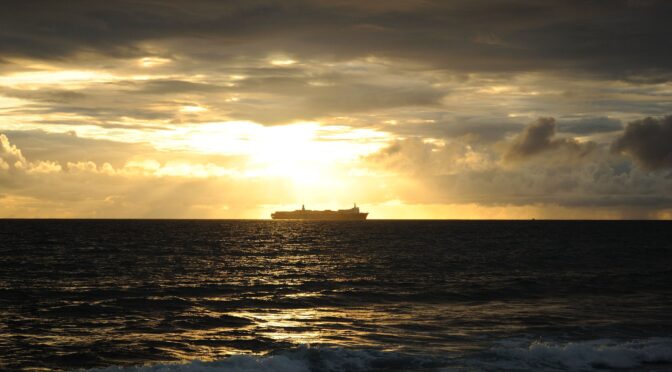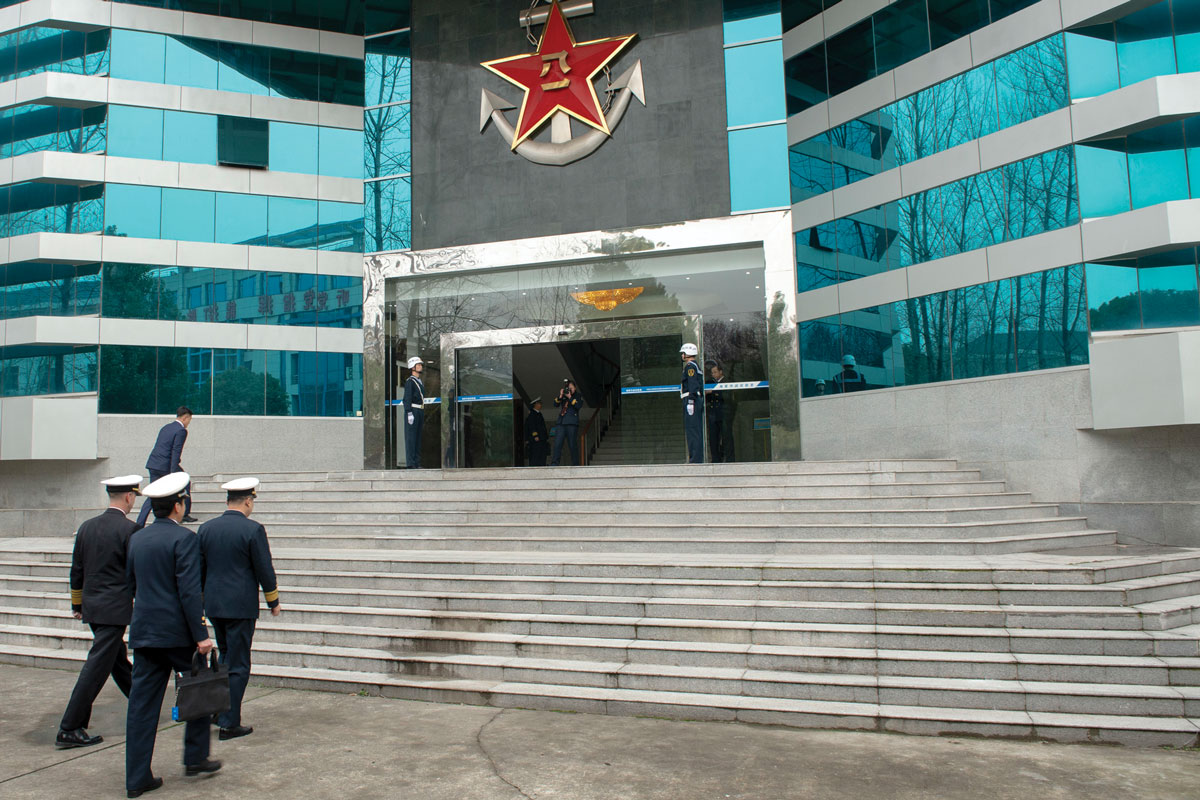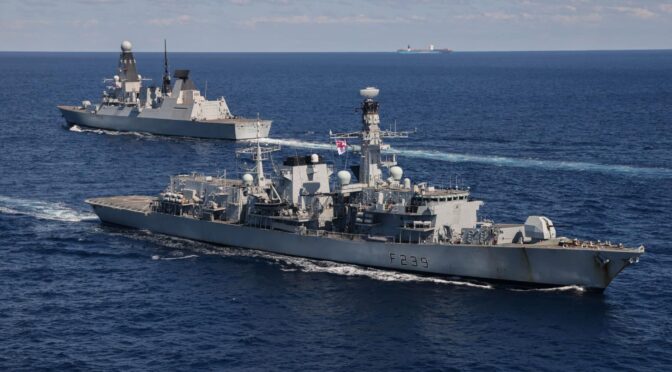By Jack Tribolet
In Fall 2023, the University of Southern California reconstituted its previously abandoned wargaming club. Ultimately, wargaming reemerged in two places for USC’s midshipmen, one as a mandatory test of knowledge after a precursory look at the impending Taiwan crisis in the Introduction to Naval Science (NSC 101) course and, second, as part of an optional club that met once a week for two hours. Observed midshipman learning from each group, spotlighted valuable lessons and provided two options for wider curriculum installment across the NROTC enterprise and Fleet. The educational application of wargames reaped undeniable returns to midshipmen growth, thus demanding the question—why is the Fleet not installing wargaming as an official, curriculum-integrated means of junior officer education?
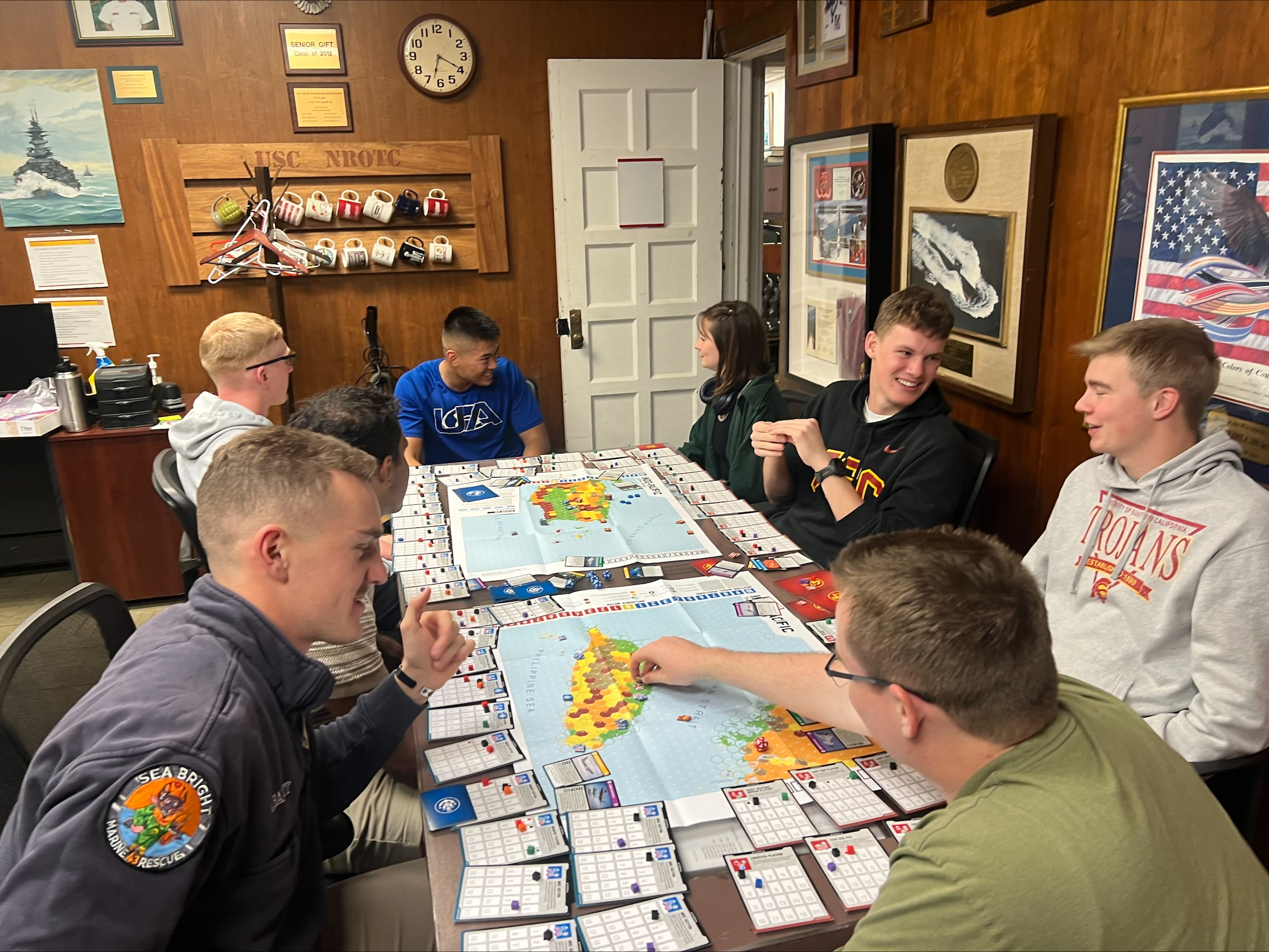
In military history, wargaming has undeniably been well-applied in the analytical sphere to test doctrine and capabilities spanning from a reeling Prussian Army in the Napoleonic Wars to the generation of War Plan Orange pre-WWII. Today, gaming continues to occur at the highest levels of the US military. However, as an educational tool, few concrete steps have occurred to gain the full benefit of this powerful tool.
A couple of anomalies exist, such as the Brute Krulak Center for Innovation and Future Warfighting at Marine Corps University (MCU), which has developed its Wargaming Cloud to provide easy online access to competitive games to its students. Additionally, the newest edition of the NROTC governing Professional Core Competencies (PCCs) includes three vague line items regarding instructing basic knowledge of wargaming. Still, the MCU alone does not have adequate reach, and the new PCCs fail to provide instructors with the “how-to” and “why” necessary for organizational change. Modern wargaming began at the Naval Academy five years ago in the form of an elective course and an extracurricular activity with plans for outreach to the fleet and the ROTC community. In its current incarnation, wargaming has been broadened but only within the confines of Annapolis. However, there is currently no coordination in its current state.
Filling the Sails of Organizational Change
When starting the USC Wargaming Club, my first instinct was to find the most up-to-date educational wargame, Sebastian Bae’s Littoral Commander, and entice midshipmen with pizza in their off time to gain attendance. Robust class and work schedules left the club only meeting once a week in the evening for two hours. Excitement about launching a new organization emerged quickly, however, the rationale behind wargaming was not immediately clear to the students. Consequently, I recognized that the club would not survive my departure back to the Fleet. The club had to become self-sufficient to create lasting organizational change within the USC Trojan Battalion. Going back to the drawing board, I realized that the midshipmen needed a complete comprehension of “why” wargaming served a purpose, see personal progression, and, most importantly, they needed to have fun while participating.
Although we later employed Littoral Commander to significant effect, the need to simplify gameplay for participants unfamiliar with hex-based wargames prompted a search for a more accessible alternative.” Eventually, the club settled on Axis & Allies. We had a physical copy and multiple digital copies running side-by-side. Axis & Allies, while set during WWII, provided the essential lessons I wanted the students to gain initially—geographical familiarity, combined arms, and, most importantly, economy of force.
Using a crawl, walk, run method, the students progressed from game familiarity to spending significant time developing pre-game team strategies reproduced across multiple iterations simultaneously as different crews clashed. Teams soon learned the necessity of flexible plans and the requirement to anticipate enemy strategy.
Furthermore, the juxtaposition of digital games coinciding with the physical version delivered some interesting observations regarding the pros and cons of digital versus analog gaming. Midshipmen clearly preferred the video game version, appreciating its built-in rule enforcement and streamlined mechanics. However, I noticed that the board game players, while taking significantly longer to complete their iteration, had more buy-in to their game, non-active players remained attuned to the action, while their compatriots observing the digital game on a large television often had their heads down in phones or idle conversation.
Despite sometimes lacking full attention, the digital gamers far outpaced their board game brethren, finishing games in a little more than half the time. Generation Z’s preference for video games cannot be overstated. Digital games must be the organizational choice, and, unlike MCU’s Wargaming Cloud, it should include AAA titles such as Command: Modern Operations and Sea Power: Naval Combat in the Missile Age to maintain midshipman attention. This generational bias is a lesson that Sebastian Bae has recognized as Littoral Commander has recently gone into production to digitize.
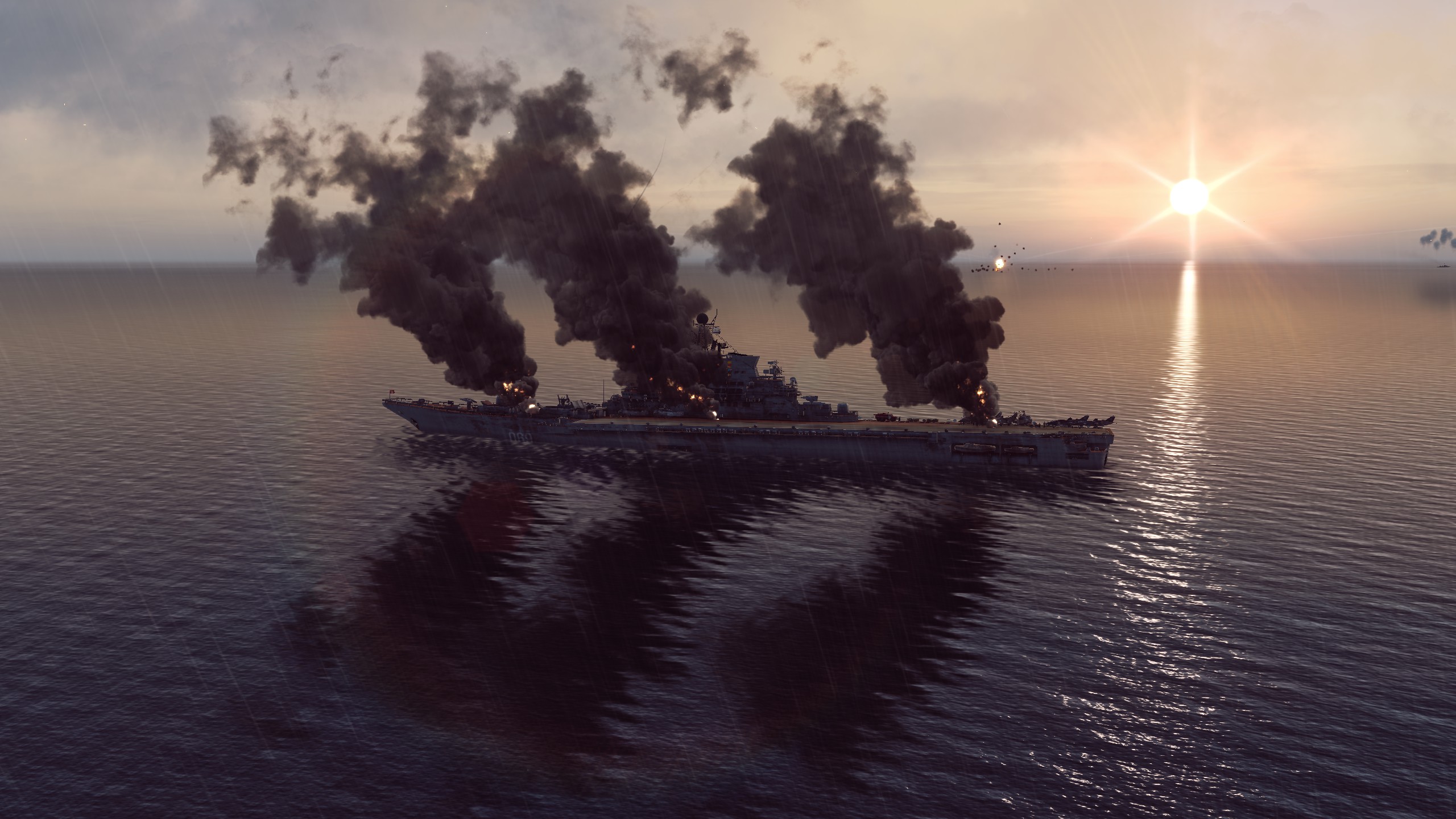
While not as robust as Littoral Commander, Axis & Allies served its purpose; it drew participation, and the lesser complexity ensured inexperienced gamers remained engaged. The digital versions felt more familiar to a video game-saturated generation, whereas many had never played complex board games. This basic introduction to gaming offered accessible decision-making opportunities while reinforcing key lessons mentioned earlier.
After a semester of Axis & Allies, the club shifted to some of Sebastian Bae’s microgames, Callsign and Find, Fix & Finish. Due to their simplistic mechanics and single focus, these mini-games took ten to twenty minutes for the midshipmen to complete, allowed for multiple rounds per session. Looking around the room full of engaged students, I recognized it was time to return to Littoral Commander.
Sebastian Bae’s Littoral Commander has everything you’d want to instruct midshipmen on the Taiwan Crisis: scenarios based around Taiwan, Luzon, the Straights of Malacca, and Okinawa. The game contains all five domains of war and even informational warfare elements. Once learned, these attributes are perfect for future Navy/USMC leaders to simulate scenarios and provide realistic decision points. However, the initial learning curve can be time-intensive for board game amateurs. Furthermore, setting up the board can take thirty to sixty minutes, even with multiple helpers. Lastly, I found the students spending far too much time selecting Joint Capability Cards (JCCs), which include nearly a hundred unique abilities to choose from for play. To mitigate these issues, I began showing up an hour early to set the board and decided the JCCs each team would have.
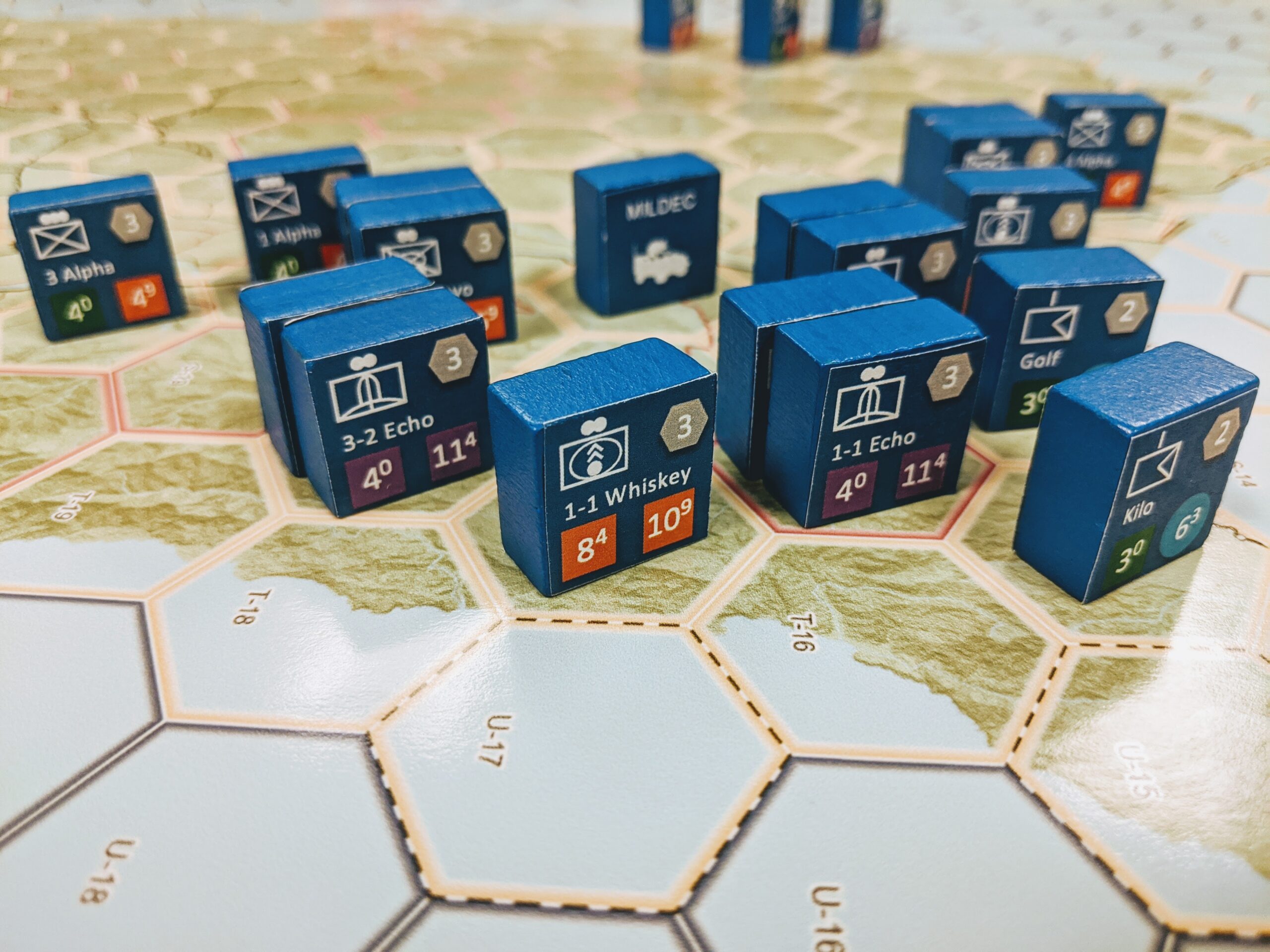
Littoral Commander subsumed the last three weeks of Wargaming Club at USC. To ensure maximum participation, I created a scenario that included Luzon and the Philippines so that we could have a total of twelve players. This time around, the game was a total hit. Participation and attentiveness soared, and unlike Axis & Allies, the midshipmen recognized their future platforms and weapon systems, instilling a sense of realism and urgency into the gameplay.
In the end, China maintained a foothold on Luzon but was repelled by Taiwan with heavy losses, resulting within the realm of possibility and aligned with published professional wargames. The eagerness to play Littoral Commander surpassed previously observed midshipman behavior, and most of all, when Sebastian Bae announced the video game version, the midshipmen applauded his decision to go digital. They will undoubtedly be some of his first customers.
Lessons in Integrated Gaming
Creating USC’s Wargaming Club arose after three years of running an end-of-semester wargame for the 4/C (freshman) NSC 101 course. The class objectives for the NSC 101 course span basic introduction topics: Navy organization, traditions, platforms, USMC, and UCMJ, among others, but by time demands, it leaves roughly half the class time to dive into other topics.
Midshipmen love sea stories, which bring to life the job they aim for; however, in these dangerous times, I found it highly pertinent to study the Taiwan Crisis and Ukraine War with the extra time. This teaching strategy came to fruition in my second year when I assigned Toshi Yoshihara and James Holmes’ excellent book, Red Star Over the Pacific: China’s Rise and the Challenge to U.S. Maritime Strategy (2018). The midshipmen read and presented on various pertinent subjects: regional geography, history, People’s Liberation Army (PLA) platforms, US platforms, current events, and even culminated in a Q & A session with Dr. Holmes himself.
The final two instructional hours of the class weaved the entirety of their recently gained Taiwan knowledge into an instructor-led wargame. Dividing the class into two, they developed three courses of action, giving the CCP the initiative. The Allies had to create three scalable defensive strategies for their opening move. Forcing pre-planned responses emulated the fog of war surrounding a new conflict and demonstrated the rapidity with which plans can fall apart. Furthermore, I encouraged subterfuges at home and learned that many attempts occurred to steal one another’s plans during the interim between classes.
The NSC 101 wargame panned out on a large whiteboard, with me as a sort of “dungeon master” controlling the board and pushing the pace of play. I determined any probability-based moves or attacks by giving an odds of success and employing dice for the participants to roll. Like the final game of Littoral Commander, this wargame mainly centered around the Philippines, where the CCP gained a foothold despite enormous losses. Unlike Littoral Commander, this conflict iteration spread throughout most of Asia, including Korea and Japan, demonstrating the incredible danger a Taiwan War poses to spreading across the hemisphere.
The popularity of this semester-end wargame surged through the students, many even asking to continue the game despite the course ending. Thirty-five students participating in a single match proved a significant challenge, but I solved it by randomly cold calling to ensure maximum attentiveness and participation. This wargaming model in educational settings is easily replicable, which any Officer Instructor with Fleet experience could imitate.
Ultimately, the purpose of wargaming remains to put the participant in the decision-making hot seat. To make important decisions under pressure, see the fallout of said decisions and enemy reaction, and most importantly, receive instructor feedback on their choices. The USMC has far outpaced the Navy in decision-making training with its Tactical Decision Games (TDGs) and Decision Forcing Cases (DFCs). The naval aviation community has simulator events and occasionally decent pre-flight walkthroughs. Still, these mainly revolve around platform tactics, techniques, and procedures, rarely forcing the participant to make gray-zone decisions.
Initiating decision-making training must begin early in officer accession pipelines and is best accomplished through curriculum-mandated wargaming. Incoming Officer Instructors could quickly receive instructional training to incorporate wargaming in NROTC at the Teaching in Higher Education course run biannually. The professional wargaming community has a deep bench full of capable instructors to maximize gaming in the NROTC enterprise, which would ultimately have a significant long-term effect and organizational change by delivering wargame literate officers to the Fleet. For now, the Trojan Battalion is preparing its first Wargaming Club meeting with the permanent absence of the Officer Instructor, who kicked the program off, meaning they achieved the first step towards organizational change.
Lieutenant Jack Tribolet was an Assistant Professor of Naval Science at the University of Southern California ROTC and was the course coordinator for Seapower and Maritime Affairs. He recently returned to the fleet as a Tactical Action Officer assigned to the Dwight D. Eisenhower (CVN-69).
Featured Image: A student describes his strategy during hands-on exercises at the Basic Analytic Wargaming Course taught by the Naval Postgraduate School Wargaming Mobile Education Team in Wiesbaden, Germany, Aug. 30 thru Sept. 10, 2021. (U.S. Army photo by Thomas Mort)


